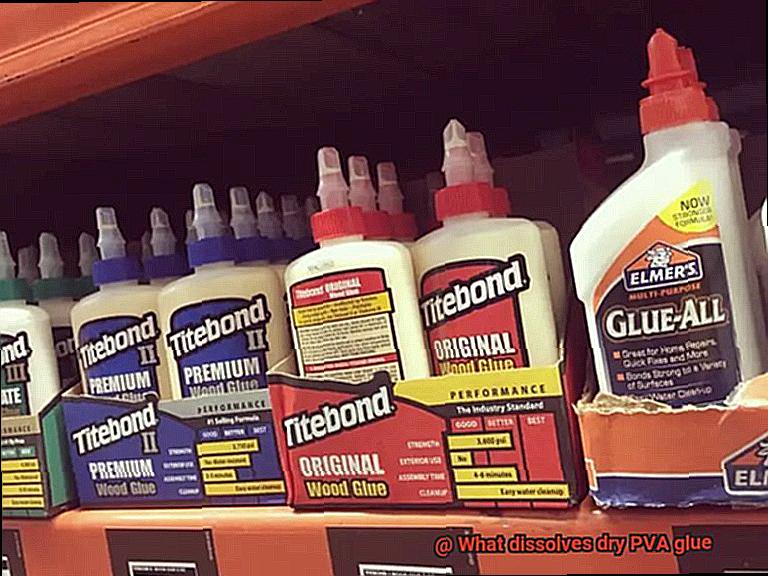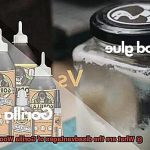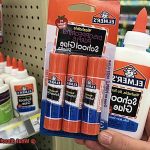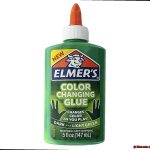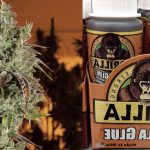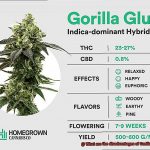Are you tired of dealing with pesky PVA glue remnants on your woodworking and crafting projects? Do you find yourself struggling to remove dried PVA glue from your tools and surfaces? Don’t worry, we’ve got you covered. In this blog post, we’ll explore the best ways to dissolve dry PVA glue.
PVA glue, also known as white glue, is a popular adhesive for various applications. But once it dries, removing it can be a real pain in the neck. Fear not, though – there are many solvents and techniques you can use to break down hardened PVA glue and make it easier to clean.
From household products like vinegar and rubbing alcohol to specialized adhesives solvents, there are plenty of options to choose from. We’ll provide a comprehensive guide on what dissolves dry PVA glue, including the most effective solvents and their pros and cons.
By the end of this post, you’ll have all the knowledge and skills necessary to tackle any PVA glue residue with ease. So let’s dive in and learn how to say goodbye to stubborn dried PVA glue once and for all.
What is PVA Glue?
Contents
- 1 What is PVA Glue?
- 2 What Happens When PVA Glue Dries?
- 3 Vinegar: An Effective Solution to Dissolve PVA Glue
- 4 Rubbing Alcohol: Another Option for Removing Dry PVA Glue
- 5 Warm Soapy Water: A Gentle Alternative for Dissolving Dry PVA Glue
- 6 Tips and Tricks for Dissolving Dry PVA Glue
- 7 Safety Precautions When Using Household Items to Remove Dry Glue
- 8 Conclusion
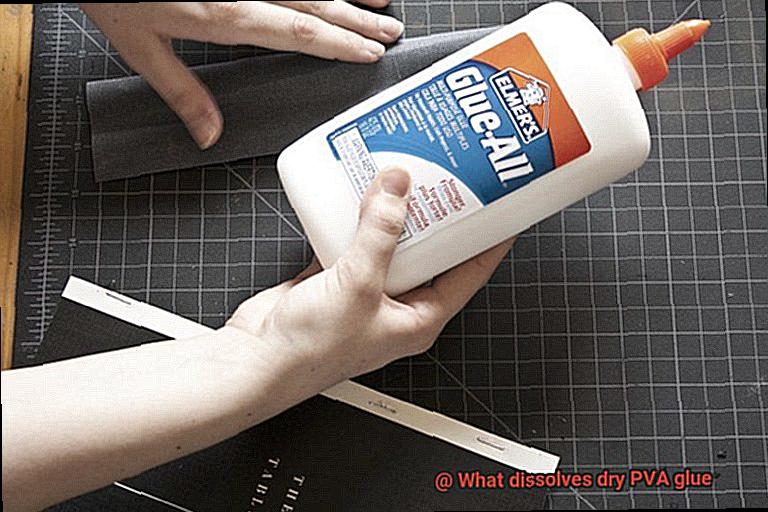
Polyvinyl acetate, or PVA glue, is a must-have adhesive for crafters, woodworkers, and anyone who needs a strong bond between surfaces. This water-based glue dries clear, which makes it ideal for creating a seamless finish. Its versatility is another reason why it’s popular with DIY enthusiasts – PVA glue can be used on paper, cardboard, wood, fabric, and more.
But the benefits of PVA glue don’t stop there. It dries quickly and is easy to clean up, which saves time and hassle. And if you need to adjust its consistency or properties, you can mix it with water or other materials.
There are two main types of PVA glue: white and clear. White PVA glue dries to an opaque finish while clear PVA glue dries transparently. Depending on your project needs, you may prefer one type over the other. But regardless of which type you choose, both offer a strong bond that can withstand regular wear and tear.
If you accidentally spill or apply too much PVA glue, there’s no need to panic. Several household items can dissolve dry PVA glue without damaging the surface it’s stuck to. Vinegar is one of the most effective substances for dissolving dry PVA glue thanks to its acidity. Rubbing alcohol is another household item that can dissolve dry PVA glue due to its acetone content. And if you’re dealing with smaller areas of dried PVA glue, warm soapy water can do the trick.
What Happens When PVA Glue Dries?
PVA glue is a popular adhesive used in various DIY and craft projects. But have you ever wondered what happens when PVA glue dries? Allow me, an expert in this field, to take you through the fascinating process.
When PVA glue dries, it undergoes a chemical change that transforms it from a liquid to a solid state. This change occurs due to the properties of the primary ingredient, polyvinyl acetate (PVA) molecules. As the water in the glue evaporates, the PVA molecules come closer and closer together, forming long chains that cross-link with each other. This creates a three-dimensional network of polymers that give the adhesive its strength.
The duration of the drying process varies depending on factors such as humidity and temperature and the thickness of the glue layer. However, once PVA glue is completely dry, it becomes transparent and hard. The dried glue is non-toxic and safe for use on most surfaces. It can withstand sanding, painting over, or staining without affecting its adhesive properties.
It’s important to note that PVA glue is not waterproof and can easily dissolve when exposed to water. Therefore, it’s crucial to keep it away from water or moisture. If you need to remove dry PVA glue from a surface, vinegar’s acidity, rubbing alcohol’s acetone content or warm soapy water can dissolve it without causing damage.
Vinegar: An Effective Solution to Dissolve PVA Glue
Fear not, as vinegar might just be the solution you’ve been looking for. As an expert on all things PVA glue, let me tell you how vinegar can effectively dissolve dry PVA glue.
Vinegar is a versatile household item that contains acetic acid, which can break down the chemical bonds in PVA glue. This means that when vinegar is applied to dried PVA glue, it softens and becomes pliable, making it easier to remove.
To use vinegar as a solution to dissolve dry PVA glue, mix equal parts of white vinegar and water in a container. Soak the affected area in the solution for several minutes until the glue softens. Patience is key here, so give it time to work its magic.
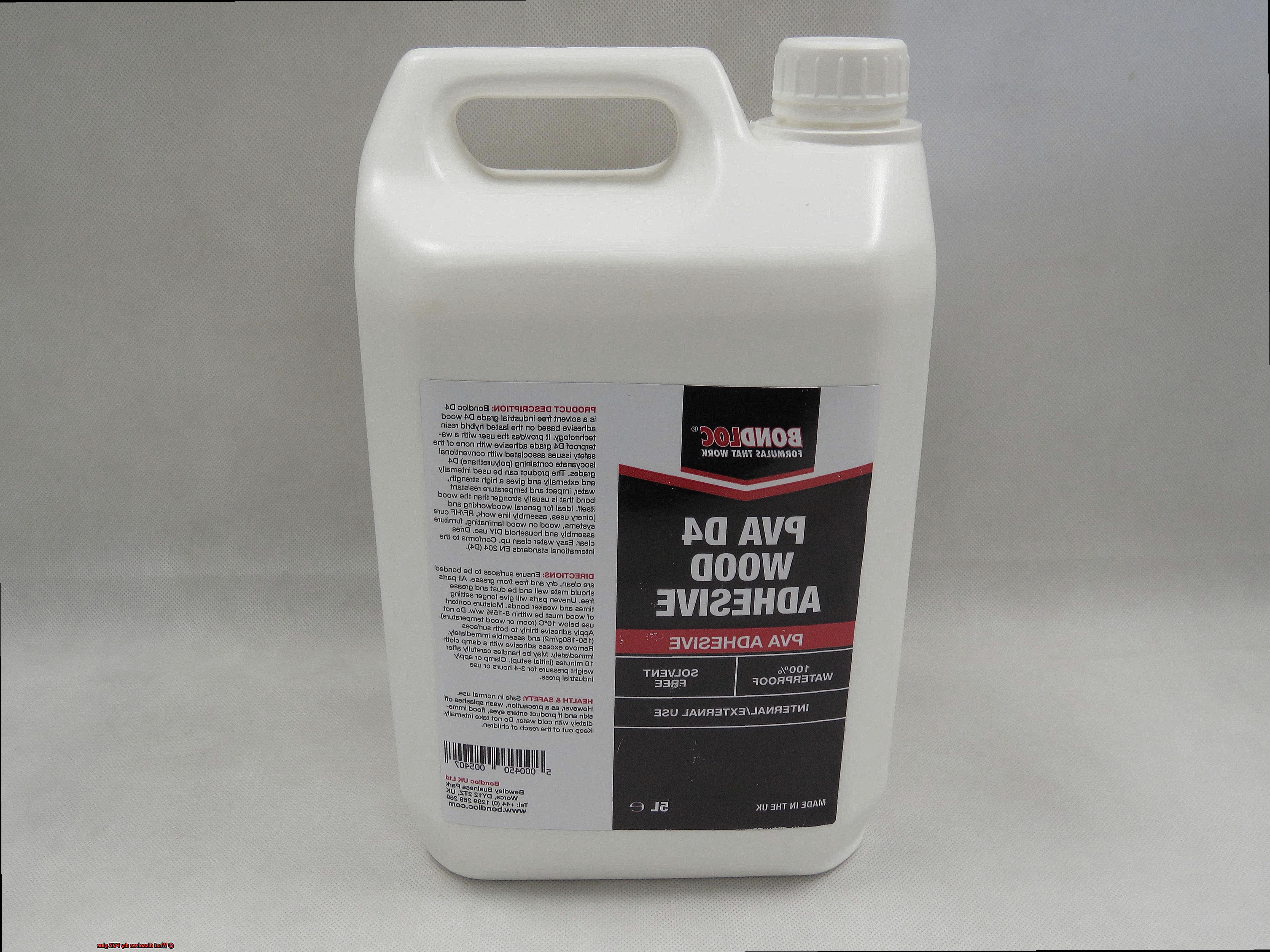
Once the glue has softened, gently remove it with a scraper or cloth. The result? Your project will be free of stubborn PVA glue.
But not all types of PVA glue are created equal, and vinegar may not work on some types of dried PVA glue. In such cases, stronger solvents like acetone or isopropyl alcohol may be necessary. However, these solvents should be used with caution as they can be harsh and potentially damage your project.
One of the best things about using vinegar as a solution is that it’s easy to use, affordable, and readily available in most households. Before using vinegar on larger surfaces, it’s always important to test the solution on a small area first to ensure that it does not damage the material.
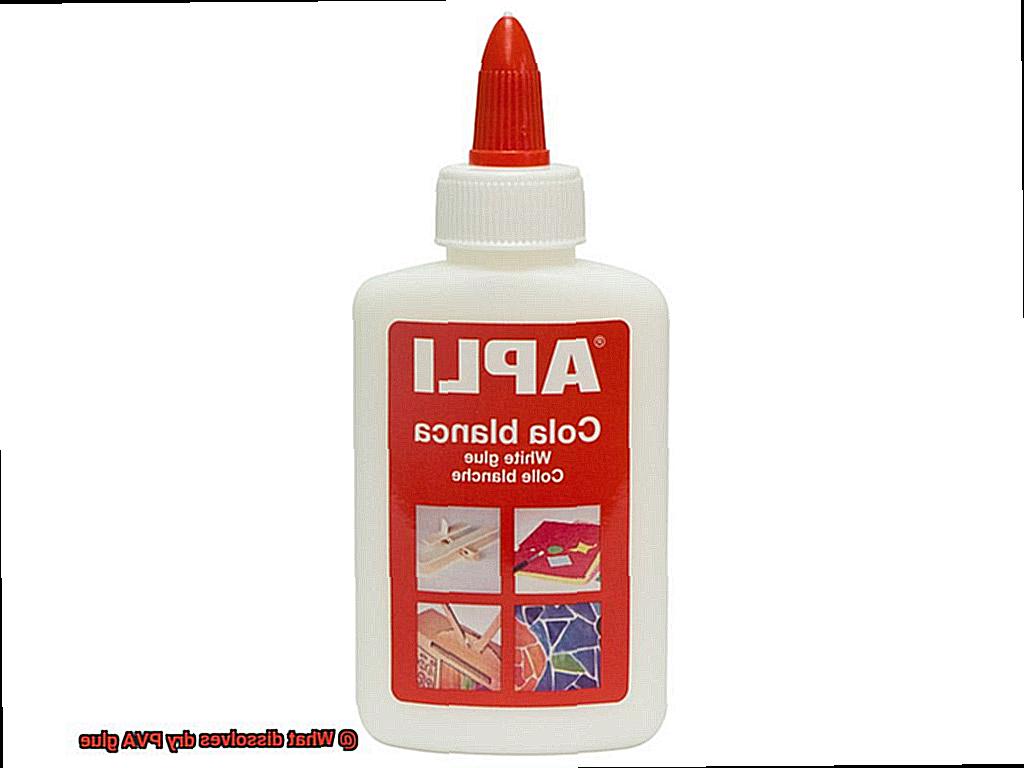
Rubbing Alcohol: Another Option for Removing Dry PVA Glue
Do not despair. Rubbing alcohol is a superhero solution that may be the answer to your woes.
As a PVA glue expert, I can confirm that rubbing alcohol is an effective and readily available option for removing dry PVA glue. This common household item can be found in most medicine cabinets and can be used as a solvent to dissolve the glue.
To use rubbing alcohol as a cleaning agent, simply apply it directly to the affected area using a cotton swab or clean cloth. Gently rub the area until the glue starts to dissolve. One of the advantages of using rubbing alcohol is that it evaporates quickly, meaning you won’t be left with any sticky residue.
However, beware that rubbing alcohol can be harsh on some surfaces, such as plastic or painted surfaces. To avoid any damage, always test a small, inconspicuous area before applying rubbing alcohol to a larger area.
For best results, use isopropyl rubbing alcohol with a concentration of at least 70%. Lower concentrations may not be as effective in dissolving the glue.
Here are some key takeaways when using rubbing alcohol to remove dry PVA glue:
- Rubbing alcohol is an effective and convenient option for removing dry PVA glue.
- It evaporates quickly and leaves no sticky residue.
- It can be harsh on certain surfaces, such as plastic or painted surfaces. Always test it on a small area first.
- Use isopropyl rubbing alcohol with a concentration of at least 70% for best results.
Warm Soapy Water: A Gentle Alternative for Dissolving Dry PVA Glue
Fear not, my friend, for there is a gentle and effective solution – warm soapy water. As an expert in this matter, I highly recommend this method for removing small amounts of dried glue without causing any harm.
The process of using warm soapy water to dissolve dry PVA glue is simple yet effective. First, dampen the affected area with warm water to soften the glue. This helps to make it easier to remove. Next, mix a small amount of dish soap or laundry detergent with warm water in a bowl. Dip a clean cloth or sponge into the soapy solution and gently rub the affected area in a circular motion. Be careful not to scrub too hard as this may cause damage to the surface or fabric.
Repeat these steps until the glue starts to dissolve. You may need to apply the soapy solution several times to ensure that all of the glue has been removed. Once you are satisfied that all of the glue has been dissolved, rinse the area thoroughly with clean water to remove any remaining soap residue.
It is important to note that warm soapy water is only effective for removing small amounts of dry PVA glue. If you are dealing with larger areas of adhesive or more stubborn stains, it may be necessary to use a stronger solvent or adhesive remover. Always test any cleaning solution on a small, inconspicuous area before applying it to the entire surface or fabric.
To recap, here are the steps for using warm soapy water as an alternative for dissolving dry PVA glue:
- Dampen the affected area with warm water.
- Mix dish soap or laundry detergent with warm water in a bowl.
- Dip a clean cloth or sponge into the soapy solution and gently rub in a circular motion.
- Repeat until all of the glue has been dissolved.
- Rinse the area thoroughly with clean water.
- Always test cleaning solutions on a small, inconspicuous area before use.
Tips and Tricks for Dissolving Dry PVA Glue
Dissolving dry PVA glue can be a frustrating task, but with the right tips and tricks, it doesn’t have to be. Here are five effective methods for removing dried PVA glue:
Warm Soapy Water
This is one of the most common methods for dissolving dry PVA glue. Mix warm water with a few drops of dish soap and apply it to the glue. Allow the solution to sit for a few minutes before using a soft-bristled brush or sponge to gently scrub away the glue. This method is particularly useful for small areas or surfaces that are not too delicate.
Vinegar
Vinegar is an acid that can break down the adhesive properties of PVA glue. Mix equal parts white vinegar and warm water and apply it to the glue. Allow the solution to sit for a few minutes before using a scrub brush or sponge to remove the glue.
Rubbing Alcohol or Nail Polish Remover
Both rubbing alcohol and nail polish remover contain solvents that can dissolve PVA glue. Apply a small amount of either substance to the glue and let it sit for a few minutes before using a scrub brush or sponge to remove it.
Commercial Adhesive Remover
If all else fails, try using a commercial adhesive remover specifically designed to dissolve tough adhesives like PVA glue. Be sure to follow the instructions carefully and test it on a small, inconspicuous area first.
Scraping
This should only be used as a last resort and with extreme caution. Use a sharp blade or scraper to gently scrape away the dried glue, being careful not to damage delicate surfaces.
It’s important to remember to always start with the gentlest method first and work your way up if necessary. Be patient and allow the solution time to work before attempting to remove the glue. Additionally, always wear gloves and work in a well-ventilated area when using potentially harsh chemicals like vinegar or rubbing alcohol.
Safety Precautions When Using Household Items to Remove Dry Glue
Many people turn to household items such as vinegar, rubbing alcohol, or nail polish remover to get the job done. However, it’s important to take safety precautions to avoid causing any damage to yourself or your belongings.
First and foremost, protect your hands by wearing gloves while handling these substances. This will prevent any skin irritation or damage. Additionally, make sure you work in a well-ventilated area to avoid inhaling any harmful fumes.
Before using vinegar or rubbing alcohol, test a small area first to ensure that it won’t damage the surface. These substances are also highly flammable, so keep them away from open flames or heat sources. Safety should always be your top priority.
When it comes to nail polish remover, which contains acetone, it’s important to use it with caution. This substance is highly flammable and can cause skin irritation. It should never be used on painted or varnished surfaces as it can cause damage.
To summarize:
- Wear gloves while handling any of these substances
- Work in a well-ventilated area
- Test a small area before using vinegar or rubbing alcohol
- Keep all substances away from open flames or heat sources
- Avoid using acetone on painted or varnished surfaces
Bg4yLeiCsOc” >
Also Read: How to Remove Mod Podge – Glue Things
Conclusion
In conclusion, removing dried PVA glue can be a daunting task for any woodworking or crafting enthusiast. But fear not, there are various solvents and techniques that can break down hardened PVA glue and make it a breeze to clean. Household items such as vinegar, rubbing alcohol, and warm soapy water have proven to be effective in dissolving dry PVA glue without causing any damage to the surface.
It is crucial to keep safety precautions in mind when handling these substances. Always wear gloves, work in a well-ventilated area, test a small area before using vinegar or rubbing alcohol, keep all substances away from open flames or heat sources, and avoid using acetone on painted or varnished surfaces.
Remember to start with the gentlest method first and work your way up if necessary. Patience is key – allow the solution time to work its magic before attempting to remove the glue.

